Malus domestica ‘Honeycrisp’
Some food trends escape me. I never understood the Instant Pot craze, but with others, I’m all in.
You best believe I’m lining up for a macaron, no matter how unusual the flavor is. Well, the black sesame and bonito flake one might have been going a bit too far…
But I digress.
Another food trend I totally understand? ‘Honeycrisp’ apples. After too many mealy, soft apples, biting into one was, as they say, a revelation.
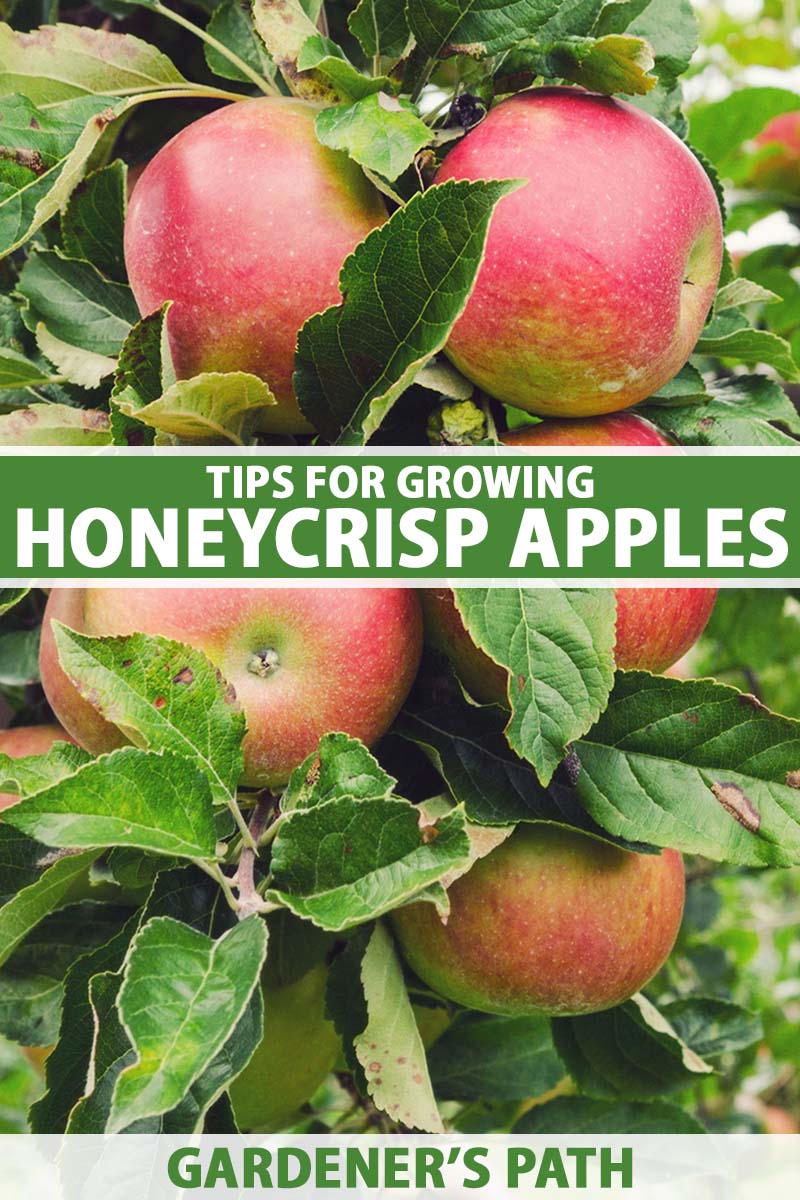
We link to vendors to help you find relevant products. If you buy from one of our links, we may earn a commission.
An apple that is sweet, tangy, and so crisp it’s like nothing else? Count me in. I don’t even care that it tends to cost three or four times as much as other apples at the grocery store.
Honestly, at this point, I’m calling it. ‘Honeycrisp’ isn’t a trend anymore. It’s fully here to stay as one of the leaders of the apple game.
Known as ‘Honeycrunch’ outside of the US, this tree likes it cold. It grows in Zones 3 to 8. It will survive in Zone 9, but the fruits will be less flavorful.
Speaking of fruit, the yellow and red fruits have a classic apple shape, a balanced sweet and tart flavor, and a crisp, crunchy texture that has made them world famous.
If you’re on board with this certified (by me, anyway) new classic, I’m sure you can’t wait to start harvesting your own ‘Honeycrisp.’ Here’s what we’ll talk about to make it happen:
What You’ll Learn
‘Honeycrisp’ apples are multitalented.
They can be eaten fresh or cooked, the trees are resistant to many of the diseases that plague other cultivars, and imagine all the money you’ll be saving on your monthly ‘Honeycrisp’ bill!
There’s a lot to love.
So let’s go!
Cultivation and History
David Bedford oversaw the development of the ‘Honeycrisp’ cultivar and released it back in 1991 through the University of Minnesota’s apple breeding program.
A senior research fellow at the University of Minnesota’s Department of Horticultural Science, apple breeding is Bedford’s passion. He’s particularly interested in explosively crisp fruits.
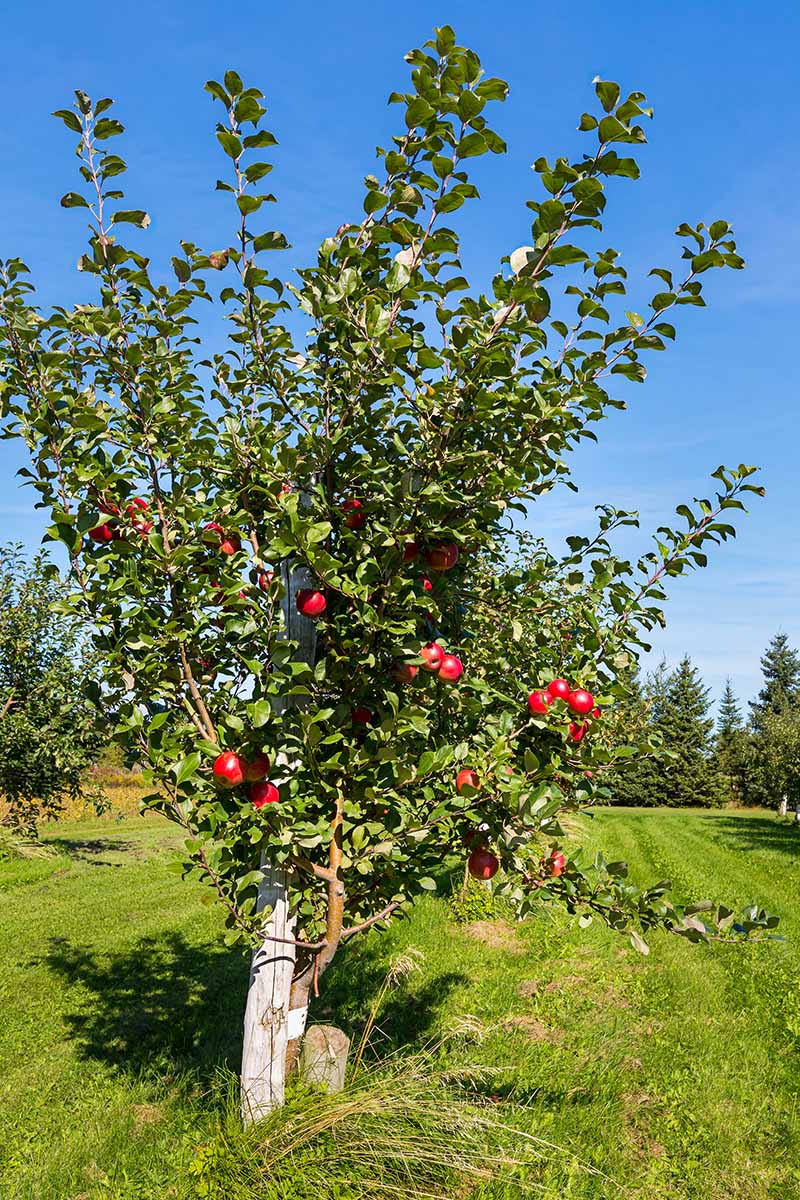
He almost lost interest in apples altogether after being raised on ‘Red Delicious,’ a type that he didn’t find exciting. But the startlingly crisp ‘Honeycrisp’ renewed his passion.
It isn’t clear exactly who actually bred ‘Honeycrisp,’ since it was part of the University’s work.
It was created using hand cross-breeding rather than hybridizing. But Bedford knew a good thing when he saw it and helped bring ‘MN 1711,’ as it was then known, to market.
What we do know is that of the thousands of apple cultivars that the Minnesota Agricultural Experiment Station has bred since 1908, only 27 have been released commercially as of 2018, and this glorious variety is one of them.
Back in 2013, the ‘Honeycrisp’ experienced a surge in demand that has hardly abated since. As of 2022, it was the third most popular apple in the US.
Bedford noted in a 2013 interview with Elizabeth Gunnison Dunn at Esquire magazine that other apples have gained some success after a promotional campaign, but ‘Honeycrisp’ was thriving despite no effort on their part.
“Honeycrisp has never had a national marketing campaign – it’s truly a grassroots phenomenon. I’ve had to ask myself, ‘Is this real?’”
Today, many breeders are using ‘Honeycrisp’ as a parent in their breeding programs. Washington State University recently released ‘Cosmic Crisp,’ and the University of Minnesota recently released ‘Triumph,’ ‘SweeTango,’ ‘Zestar’ and ‘SnowSweet’ to some success.
Sadly, the same lack of records in telling us who bred the variety has also left us wondering what the genetic roots of ‘Honeycrisp’ are.
DNA testing recently revealed that it has ‘Reinette Franche’ and ‘Duchess of Oldenburg’ in its lineage. Both of these are cold-hardy options that came from Europe and Russia to the US, respectively.
So where does all this marvelous crispness come from? It turns out that if you look at a slice of ‘Honeycrisp’ fruit under a microscope, the cells are about twice as large as those of other apples. That means lots of extra moisture.
Propagation
While it was initially patented when it was first released, ‘Honeycrisp’ is no longer under patent in the US.
That means you can propagate one by taking a cutting from a friend’s tree. The name is trademarked, however, so don’t go trying to name and sell your new trees under the same name.
Apples can’t be propagated from seed. Or, at least, they can’t be if you want to be able to predict what you’ll get. The qualities of a specific cultivar are not guaranteed via sexual reproduction.
They can be grafted, air-layered, budded, or grown from cuttings. And, of course, you can always buy a tree at your local nursery. This cultivar tree comes on dwarf and full-sized (standard) rootstock.
In Europe, New Zealand, Australia, Chile, and South Africa, this variety tree is still under patent and can’t be reproduced. You must purchase a plant from an approved retailer.
When you plant, be sure not to bury the trunk any deeper than it was in the growing container. Don’t fertilize when you plant.
How to Grow Honeycrisp Apples
Hailing from Minnesota, you know this tree isn’t afraid of a frigid winter. While it can survive climates as far north as Zone 4, it doesn’t do well in areas with hot summers.
Pick a different cultivar if you live in the south or west, except for cool regions like the Pacific Northwest.
These plants need excellent drainage, as all apples do. When you’re scouting out a spot in your garden, make sure the soil is well-draining.

While you can amend the soil when planting, you won’t be able to amend an area wide and deep enough to fix it if you have heavy clay.
Give the tree full sun and space it about eight feet away from any other trees or buildings. This tree isn’t one of the tallest you’ll find out there. Standards grow to about 15 feet tall and wide, and dwarf trees grow to about five feet tall and three feet wide.
‘Honeycrisp’ trees need about two inches of water per week. I know that’s not particularly helpful information unless you have a rain gauge (and you should have a rain gauge!), but it gives us a good starting point.
Water needs vary depending on how much rain you get, how hot it is, how much sun your plants receive, how well your soil drains, and even how sloped your landscape is.
The basic rule of thumb is to give your tree about 20 gallons of water per week if there is no rain.
This should ideally be spread out over two days to encourage deep root development. Speaking of, avoid using sprinklers or a drip system. You want to water deep, not shallowly.
Learn more about apple tree irrigation in our guide.
Your tree doesn’t need any fertilizer for the first two years that it’s in the ground.
In the third year, start applying a nitrogen-heavy fertilizer once in the spring at bud break and once in the early summer when the fruits are about half their eventual size.
It’s not an exact science, so don’t stress too much about timing. Just do your best.
A product designed for feeding fruit trees will have just the right formulation. Isn’t it nice when someone takes all the guesswork out of things?
If anyone asks me to recommend a fertilizer, my go-to is always Down to Earth. They make all-natural fertilizers in compostable boxes, and they’ve always worked well for my crops.
Down to Earth Fruit Tree Formula
Their Fruit Tree formula is available at Arbico Organics in five-, 15-, and 25-pound boxes.
For more details on growing apples, check out our full guide.
Growing Tips
- Plant in full sun, eight feet away from other plants and structures.
- Place in a spot with well-draining soil.
- Feed in the spring and early summer.
Pruning and Maintenance
‘Honeycrisp’ needs regular pruning to produce well. You need to prune for shape and to encourage growth, as well as remove any water sprouts.
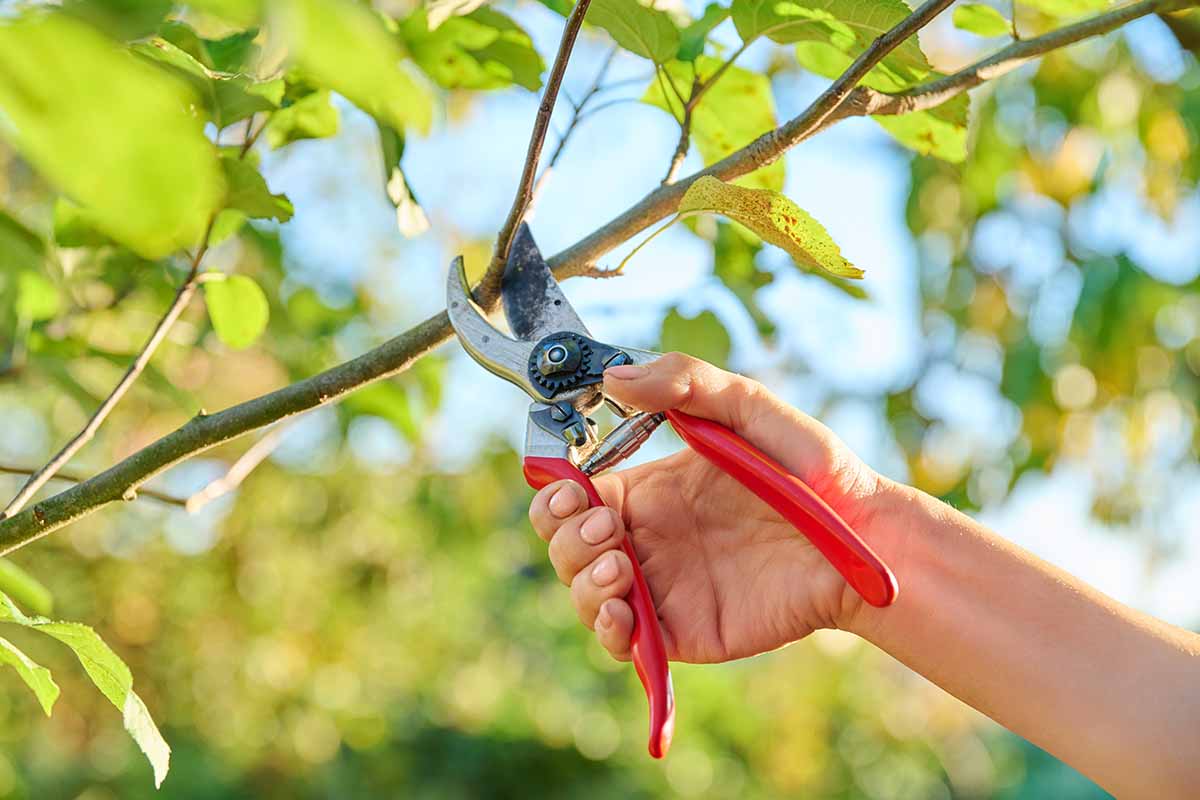
In addition, follow the “three D” rule. Remove any branches that are damaged, diseased, or deformed.
Thin out the fruits as they develop to encourage the largest fruits and best flavor. Remove any weak, small, damaged, or diseased fruits.
Leave one fruit in place every four inches or so. Fruits should never touch.
Where to Buy Honeycrisp Apple Trees
Before you go buying a tree, remember that you’ll need more than one to produce a harvest.
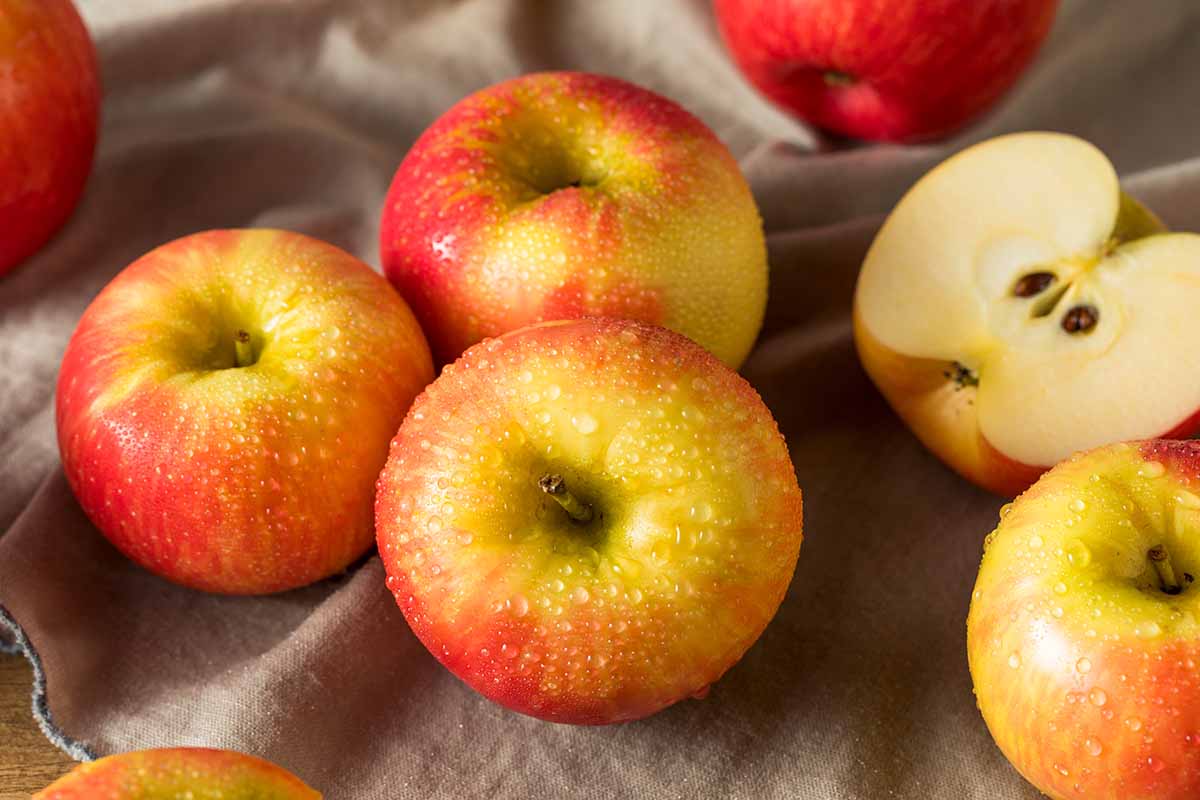
‘Honeycrisp’ is part of flowering group 4, or mid- to late-blooming. If you aren’t sure what that means, visit our guide to apple pollination for all you could ever want to know.
To summarize, most apples aren’t self-fruitful, which means they need a companion nearby in order to be pollinated well, and develop fruit.
Any tree in groups 3, 4, or 5 can be used as a companion.
Some of the more common options are:
- Brown’s Apple
- Burgundy
- Cortland
- Cox’s Orange Pippin
- Dayton
- Enterprise
- Freedom
- Frostbite
- Fuji
- Gala
- Golden Delicious
- Granny Smith
- Lady
- Northern Spy
- SnowSweet
- WineCrisp
- Yarlington Mill
If you want to pick up a live tree, you’re in luck. Fast Growing Trees carries them.
You can also visit Fast Growing Trees for a ‘Granny Smith,’ so you can have a happy pair.
Nature Hills Nursery also carries four- to five-feet tall specimens in #3 containers.
Managing Pests and Disease
‘Honeycrisp’ would probably be every bit as popular if it wasn’t such a sturdy tree, but it is – it’s resistant to bitter pit, fire blight, and soft scald.
It’s susceptible to powdery mildew, sooty blotch, and flyspeck, but no more than most other varieties.
It’s also not immune to apple maggots, but no tree is, so you can’t be too disappointed.
The first step to avoid disease is to ensure that you’re planting in the right area and that you’re practicing good garden hygiene.
Always use clean tools when pruning, don’t spray water on the foliage and only apply it at the soil level, and don’t crowd your trees.
If you suspect your tree is suffering from some problem, whether that shows up as fungal growth, leaf spots, falling fruits, yellowing leaves, or something else, visit our guides to apple pests and diseases to see if you can pinpoint the problem.
Fortunately, ‘Honeycrisp’ trees tend to be pretty darn healthy.
Harvesting
‘Honeycrisp’ trees mature in about six years, but they’ll start to produce well before that.
The medium to large fruits will be ready to harvest sometime in late September or early October, depending on where you live.
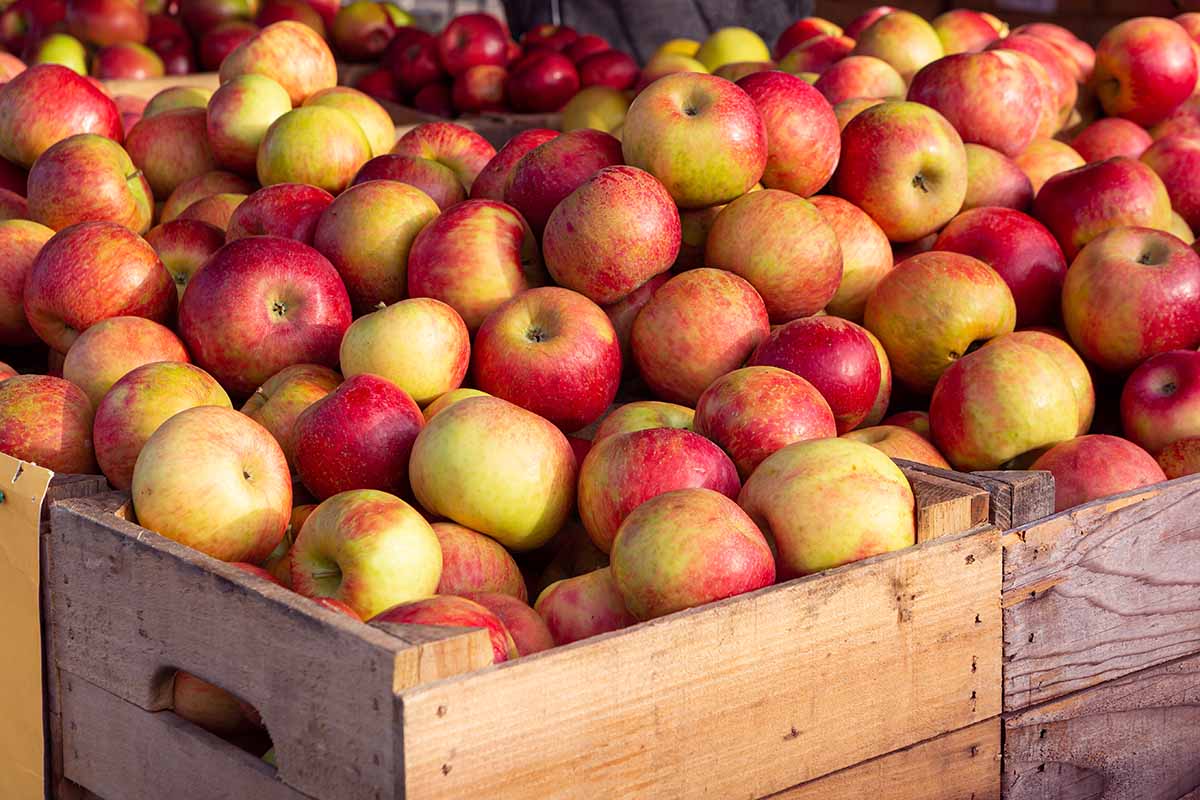
Don’t be too eager. If you harvest early, you’ll sacrifice flavor. Fruits harvested too early will be mild.
Wait for the fruits to be fully shaped and colored. They should come away from the tree easily. If you have to pull and pull, it’s too soon.
Once the fruit comes away easily, take a bite. Does it have that characteristic crisp, sharp crunch, and balanced sweet and tart flavor? Excellent. Start harvesting.
Fruits should be removed from the tree within two weeks. Check out our comprehensive guide for tips on harvesting apples.
Storage and Preserving
As if its cold tolerance, disease resistance, and stunning flavor and texture weren’t enough to recommend ‘Honeycrisp,’ the fruits are also stellar for storing.
If you place them in a cold storage between 34 and 40°F, the fruits can last for up to seven months.
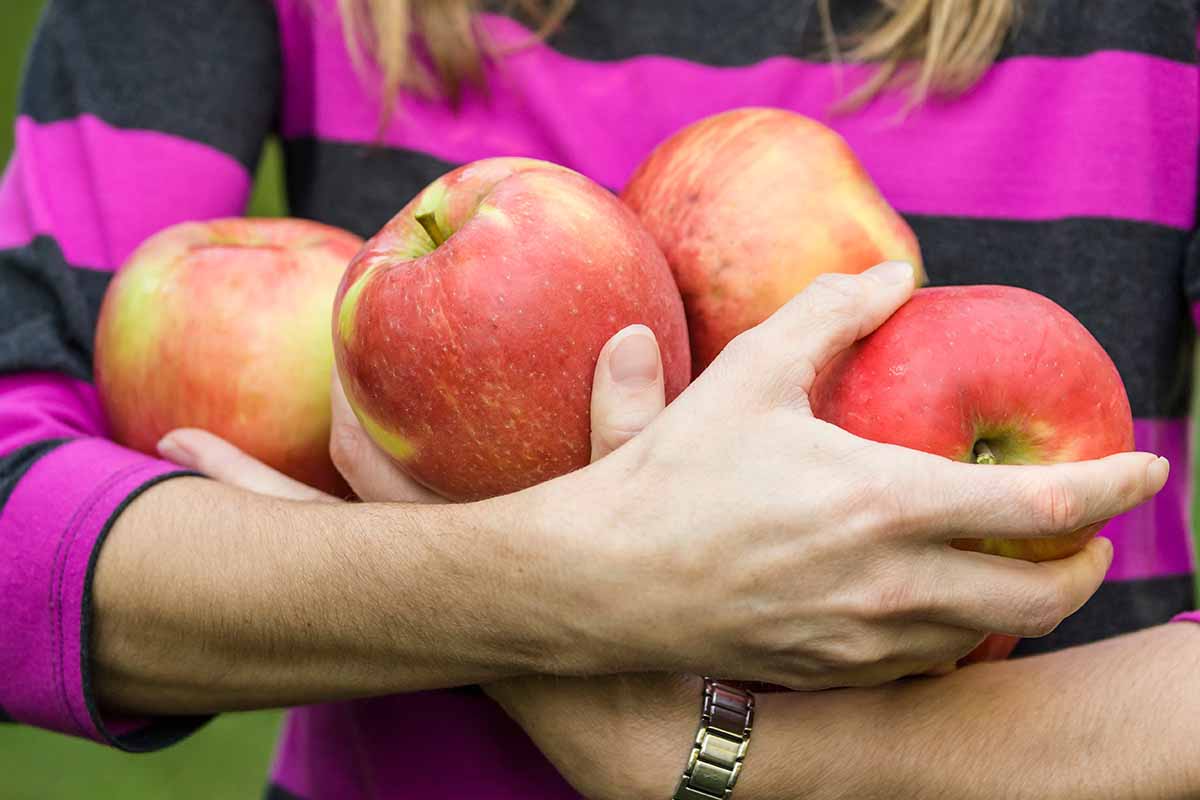
Don’t crowd them and keep humidity to a minimum, and you can be enjoying fresh ‘Honeycrisp’ apples almost until your next harvest.
You’re probably going to have more fruit than you’ll know what to do with. You can slice and dry them, make applesauce or cider, or whip up some fruit leather to use up your excess.
Learn more about storing apples in our guide.
Quick Reference Growing Guide
| Plant Type: | Deciduous fruit tree | Maintenance: | Moderate |
| Native to: | Central Asia | Tolerance: | Frigid weather, some drought |
| Hardiness (USDA Zones): | 3-8 | Soil Type: | Moderately sandy to moderately clayey |
| Bloom Time/Season: | Spring (flowers), fall (fruit) | Soil pH: | 5.8-7.0 |
| Exposure: | Full sun | Soil Drainage: | Well-draining |
| Time to Maturity: | 6 years | Attracts: | Pollinators |
| Spacing: | 8 feet | Companion Planting: | Crabapples |
| Planting Depth: | Depth of the original growing container (transplants) | Avoid Planting With: | Cedars |
| Height: | 15 feet | Order: | Rosales |
| Spread: | 15 feet | Family: | Rosaceae |
| Growth Rate: | Moderate | Genus: | Malus |
| Water Needs: | Low | Species: | x domestica |
| Common Pests and Diseases: | Apple maggots; cedar apple rust, fly speck, powdery mildew, sooty blotch | Cultivar: | Honeycrisp |
Extra Crispy, Please!
It’s not hyperbole to say that this apple is a game-changer.
‘Honeycrisp’ was named Minnesota’s state fruit in 2006, and landed on the Association of University Technology Managers’ Better World Report as one of the top “25 Innovations that Changed the World” in 2006 as well.
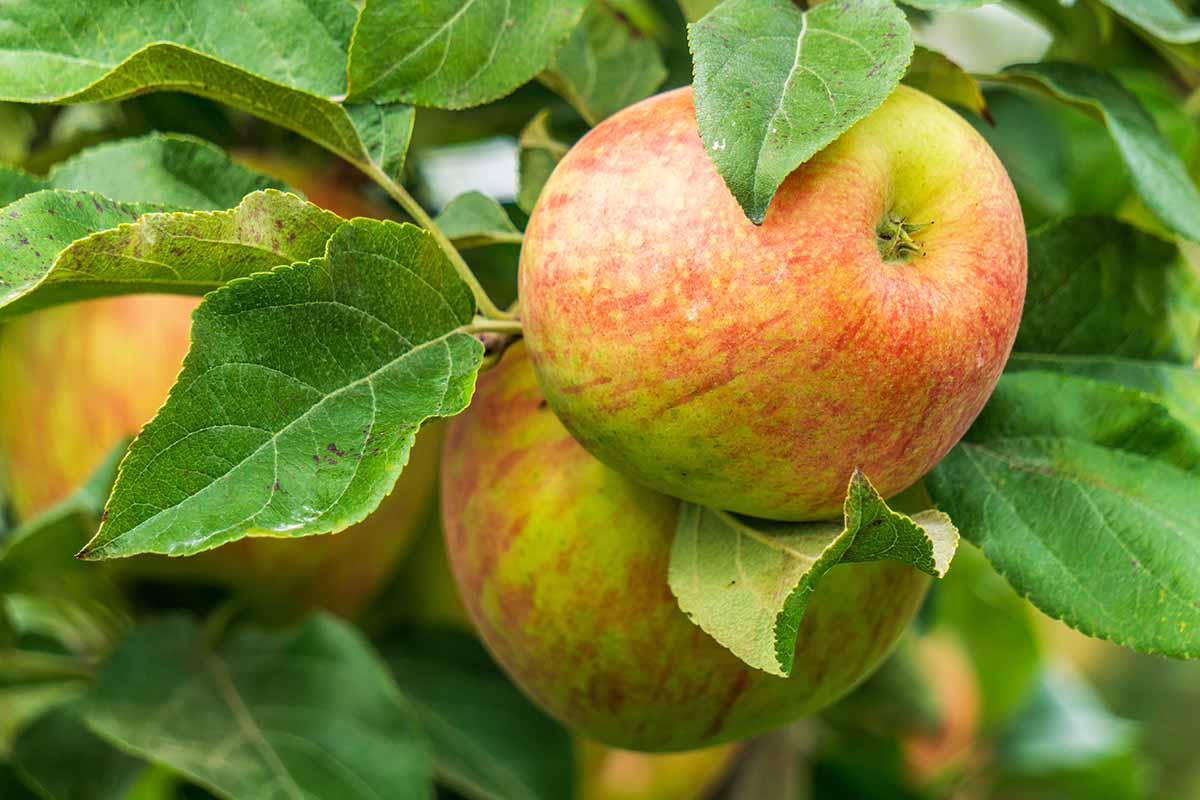
This isn’t your mom’s ‘Red Delicious.’
So, what brings you to the crisp apple universe? Did you try one from a grocery store and decide that it was just what you wanted?
Or have you heard the hype and dream of growing one in your yard? Maybe you’re an apple grower who wants to make a small fortune at the farmers market? Tell us your origin story in the comments!
Now that you’ve picked the perfect plant for your garden, you might be looking for more information about growing apples. If so, we have some other guides worth a look. Here are just a few:
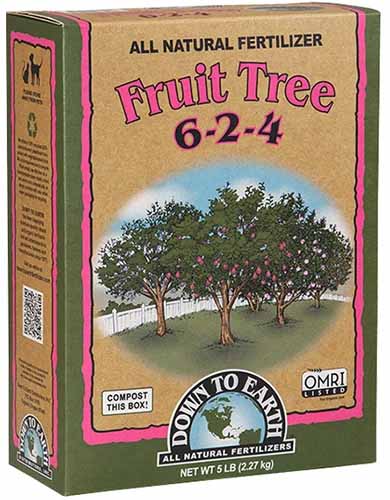
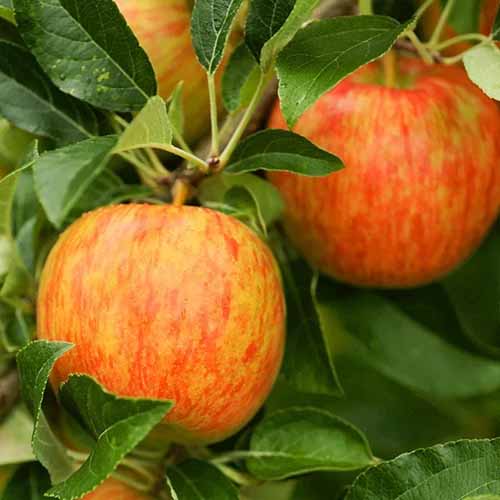
I grow Honeycrisp. A great apple but it is very susceptible to bitter pit. Needs to be grown on specific rootstocks or you’ll have problems.
Thanks for weighing in, David. ‘Honeycrisp’ are resistant to some diseases, but not to bitter pit and fire blight, unfortunately. B.10, B.9, and G.65 rootstock is resistant to bitter pit, though it can be difficult for home growers to determine the rootstock sometimes.
Plz tell me which rootstock is suitable for honeycrisp/plz tell me about elevation/can we grow honeycrisp in Kashmir
Would love to know where you can purchase these apple trees. I have called around to different nurseries, n no one has them…
Hi Sheryle, where are you located? You can find Honeycrisp trees available at Nature Hills Nursery or via FastGrowingTrees.com.
Some please tell me on which elevation we can plant honeycrisp apple plants/can we grow honeycrisp apple variety in Kashmir
Hi there, ‘Honeycrisp’ are actually a good option for high elevations. We grew one at our cabin at 7,500 feet (2300 meters), and I’ve heard of them growing up to 8,500 feet (2600 meters). So long as you have enough days above freezing for the apples to develop, they can tolerate high altitudes.